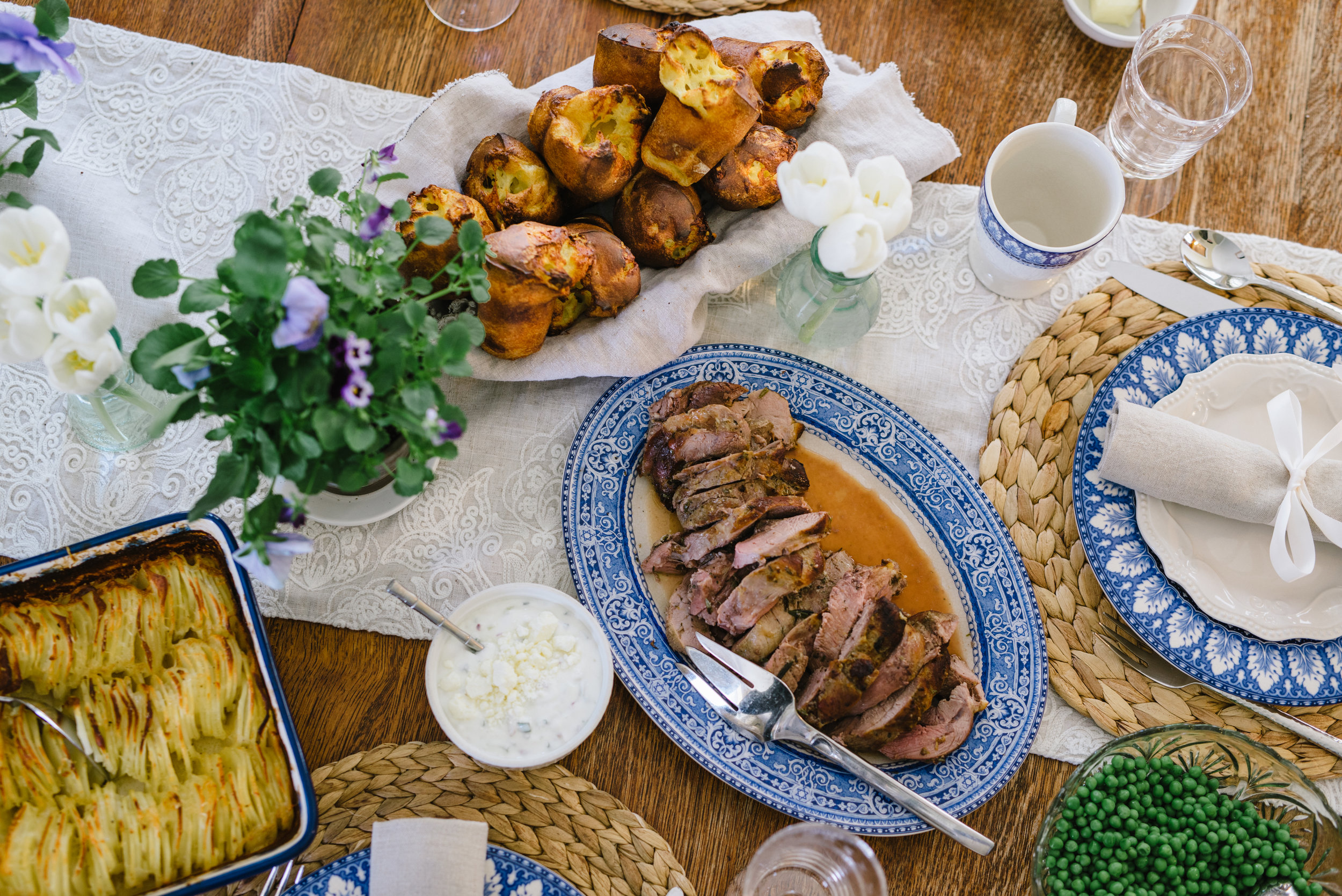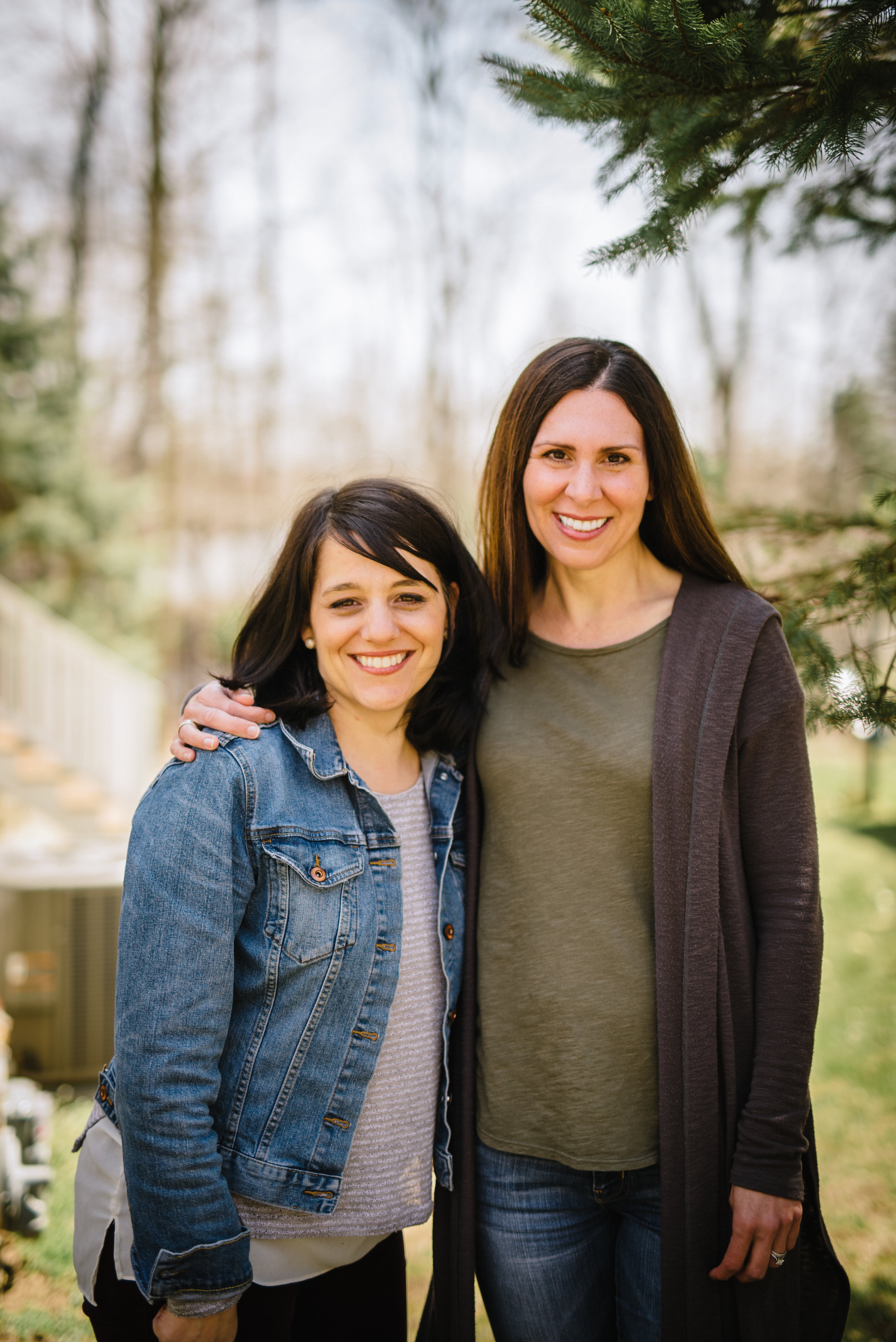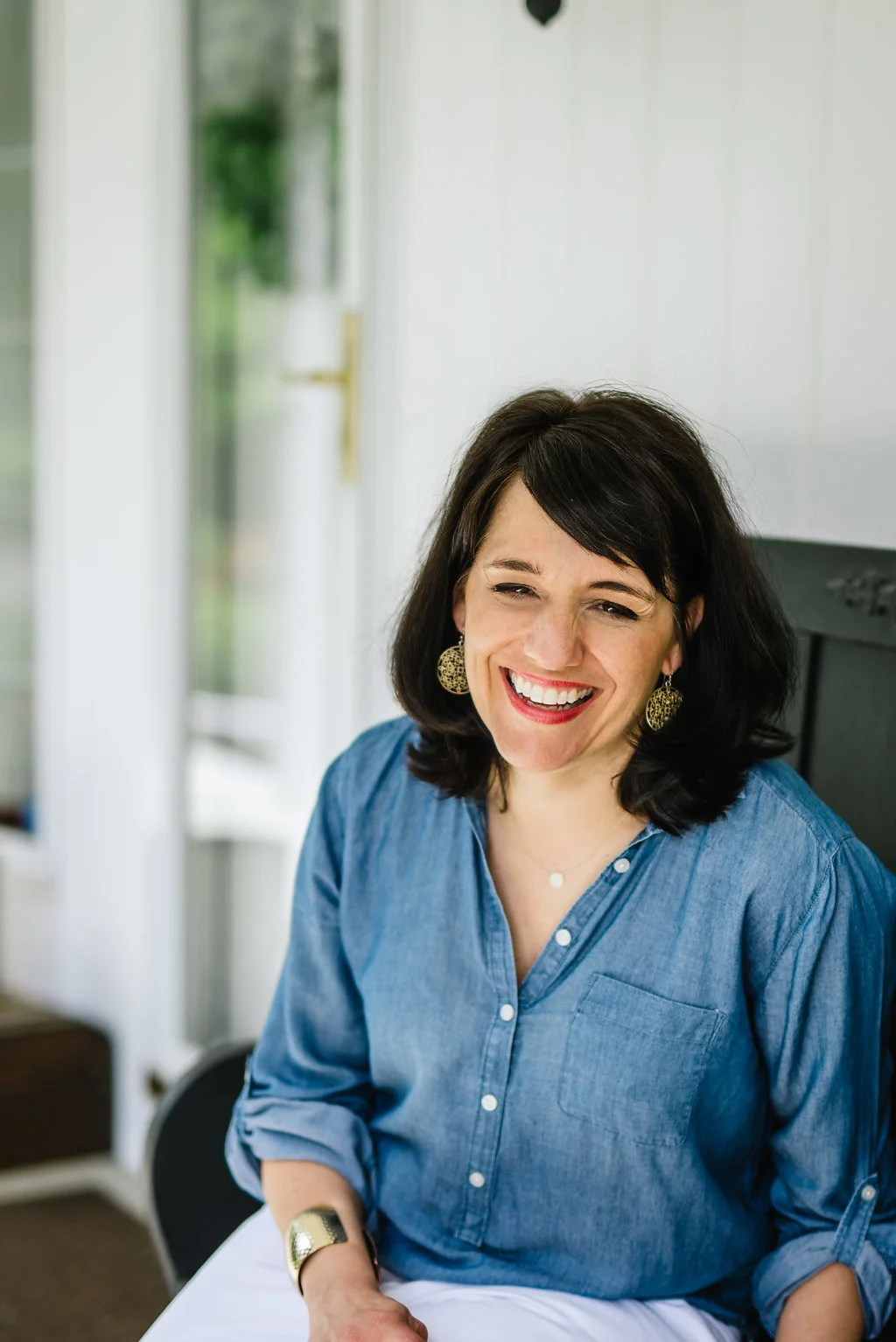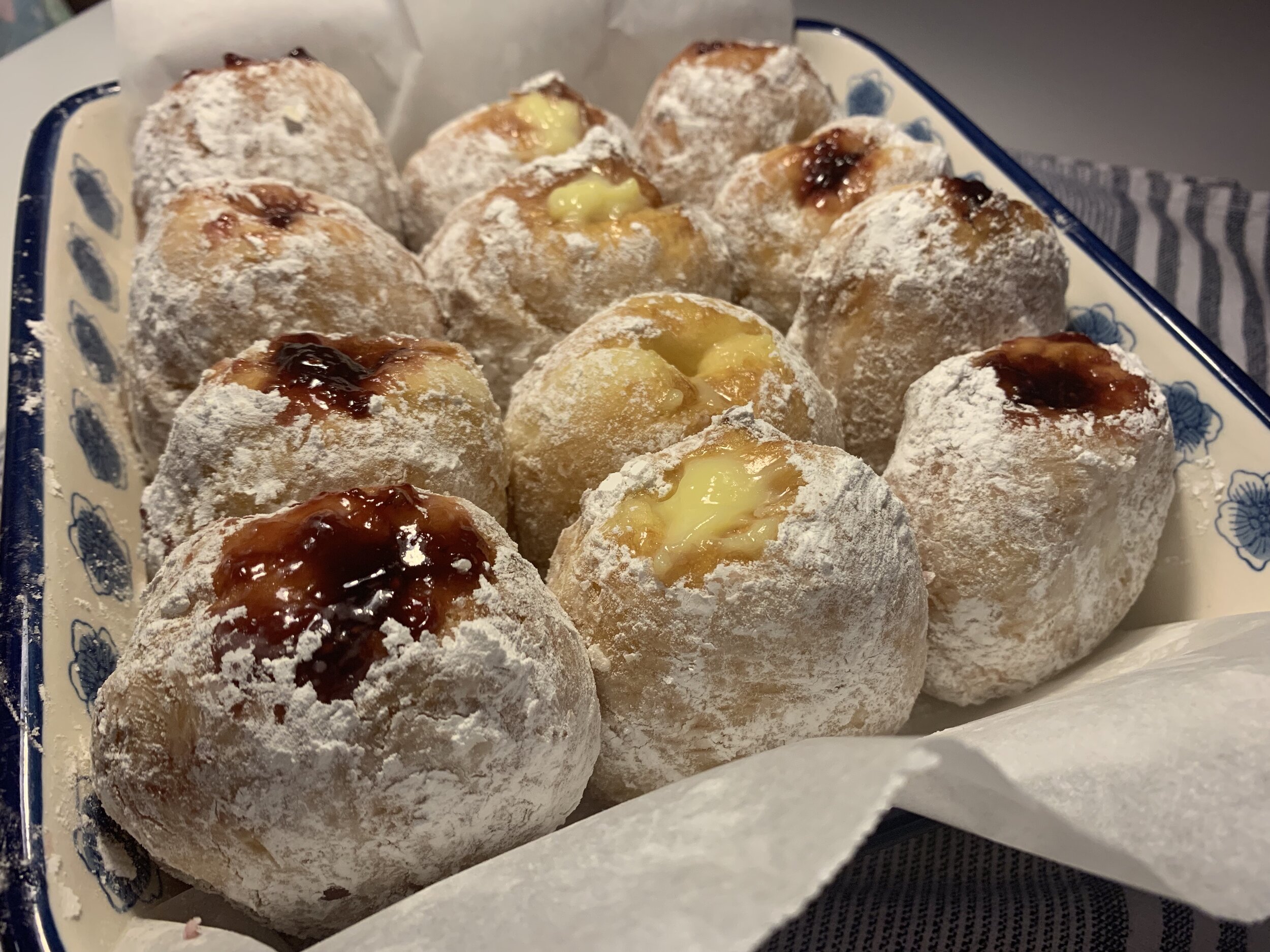Cooking with friends: Prepping & Roasting Lamb
/This week I’m sharing our Easter dinner menu, as well as tips for preparing a holiday meal. For Easter, I often make ham with a grainy mustard & brown sugar glaze, but this year I wanted to try lamb—It feels special and seasonal. But while I love lamb, but I’m slightly intimidated to make it. The meat is tough if over cooked and can taste gamey if not properly prepared.
Me & Steph. Excited to pass along her impressive tying & trussing skills.
With this in mind, I’m excited to introduce my friend, Stephanie Maxwell, who walks me through a step-by-step tutorial on preparing and roasting lamb (check out videos at the end of this post). Steph is a great cook (think modern-day Julia Child), and I know I will be referencing her tying and trussing tips for years to come!
Below is what’s on the menu for Easter dinner. And what I really like about this menu is that everything can be prepped the day before, which makes day-of prep much easier.
Menu
Roast Boneless Leg of Lamb
Cheesy Hasselback Gratin Potatoes via the New York Times
Popovers with jam via Cook’s Illustrated, adapted by adding cheddar cheese.
Baby peas
Lemon Pie via Magnolia Table
Planning
A couple quick planning suggestions. Split the work into three days if possible—Trust me, it’s much more enjoyable for everyone if you plan ahead. My natural inclination is towards procrastination, or overfilling my schedule, but years of holiday meals and event planning has taught me that slow and steady is the better course of action.
Day 1 (Friday). Make grocery list and shop.
Day 2 (Saturday). Prep as much as possible (including setting the table).
Prepare popover batter.
Make pie crust & filling. Pie should set overnight in fridge.
Make lamb rub, prepare & truss lamb, refrigerate overnight.
Peel and slice potatoes (store in water in an airtight container).
Day 3 (Sunday). Finish assembling and cooking food.
Prepare a timeline. (Often I just use a scratch piece of paper to make sure I know what time everything needs to be in and out of the oven in time for dinner, but both my mom and Stephanie keep spread sheets for events). Not only does this keep things super organized, it’s also helpful from year to year to look back at menus & timelines. It’s amazing how much you forget from one year to the next!)
Lamb: Make the rub, trim and truss lamb the night before.
Stephanie’s rub for a 5-6 lb. leg of lamb:
3 cloves of garlic
2 tsp of salt
Pound garlic and salt in mortar with pestle until a paste forms. (A small food processor would also work if you don’t have a mortar.) Add rosemary, oregano & lemon:
2 TBSP rosemary
1 TBSP oregano
Zest of 1 lemon (Make sure not to get the pith or white skin beneath the yellow lemon zest.)
Grind the herbs and zest into the garlic-salt paste in the mortar (or food processor), and then add:
1/4 cup of olive oil
2 TBSP lemon juice
1 tsp of ground pepper
Trim as much fat as possible from the lamb. As I learned from Stephanie, the gamey taste resides in the fat, so remove as much fat as possible before butterflying.
Butterfly the meat. Place lamb fat-side down and score interior of the lamb so the rub can penetrate the meat. (Be careful not to cut the meat all the way through).
Spread half of the rub into the scored meat, and then roll the meat before trussing.
Truss the lamb and cover with rub. (Watch the trussing and tying video for detailed instructions). Marinate a few hours or overnight.
Roasting Lamb:
Roast at 450 degrees for first 20 minutes, and then reduce the oven to 375 until the roast reaches an internal temperature of 130-140 degrees (usually about an hour). In this case, we roasted a 4 lb lamb, and it took about an hour total. Note that your roast will continue to cook as it rests. So if you plan to let it sit for more than 10 minutes, take it out when the internal temperature reaches 130 degrees to ensure you don’t end up with overdone meat. Serve warm with one or both of the sauces below.
Yogurt sauce: Mix together
1 cup whole milk plain yogurt,
a squeeze of lemon to taste, salt to taste,
1/4 c. diced onion,
1/4 c diced cucumber,
chopped chives,
a pinch of cayenne, and
feta on top (optional)
Chimichurri sauce: Mix together
1/4 c. olive oil
1/4 c. red-wine vinegar
1/4 c. finely chopped onion
2 TBSP minced red bell pepper
1 1/2 tsp minced garlic
2 TBSP chopped flat-leaf parsley
1 1/2 tsp oregano leaves
1/4 tsp hot red-pepper flakes
Cheddar Popovers with homemade jam. Popover recipe adapted from Cooks Illustrated Baking Book. I added cheddar cheese—so good.
Popovers—Recently, Brock and I ate at a steakhouse and had the most delicious cheddar-cheese popovers. This started me on a quest to find a recipe for Easter. They feel like fancy holiday fare, but truthfully, the batter is simple to make. I use a 12 cup mini-popover pan, though I read a number of recipes that say you can use non-stick muffin pans as well (you fill half full). After making a recipe from The Joy of Cooking and a Cook’s Illustrated version, I settled on the Cook’s Illustrated recipe. There are a few key differences between Cook’s Illustrated and The Joy of Cooking.
First, to get tall, substantial popovers, Cook’s Illustrated doubles the batter, and they also use bread flour. Second, because they use bread flour, they have you rest the batter for an hour or over night. This is a bonus for me—it allows me to make the batter the day before and bake the popovers the day of. You can also make them ahead and warm up in the oven. Also, I added cheddar cheese to my recipe. Pour batter into each mini-popover cup (about half full), sprinkle the batter with cheese (about a 1-2 TBSP) and then top each cup with more batter. Each popover cup should be about 2/3rd full before baking. Serve with homemade jam & butter. I find that the trickiest part of making popovers is really knowing your oven—With both recipes, my popovers cooked in 1/4 of the time listed in the recipe. I suggest using the oven light to watch that they get a deep golden brown, but do not burn.
Cheesy Hasselback Potato gratin. This has become a favorite at our house. A couple of tips: I peel and slice my potatoes the night before, cover with water and store in the fridge. The water & dark fridge keep them from browning. I drain them before tossing with the garlic, cream & cheese mixture. And once I stack the potatoes in rows in the baking dish, I immediately pour the remaining cream mixture over the potatoes—I’ve found that half way up the side of the potatoes is good coverage (enough that it’s rich and creamy, but not too much that it spills over the pan).
Baby peas—frozen baby peas (I used Birds Eye brand). Stephanie taught me a great way to gently prep peas so they don’t get shriveled and over cooked. Boil water, place peas in a colander and pour hot water over the peas. Toss as you go to defrost peas. Serve with a pat of butter and salt to taste. So easy & delicious. Thanks, Steph!
Lemon pie from the Magnolia Table Cookbook.
Lemon pie. I found this delicious and simple recipe in the Magnolia Table Cookbook. It reminds me of key lime pie. I made an easy graham cracker crust (also the day before), and made the custard the day before as well. Future tweaks: I would add some lemon zest to kick up the lemon flavor a notch.
So that’s my Easter menu. Check out the prepping and roasting lamb videos below. And of course, I would love to hear what’s cooking at your house!


















